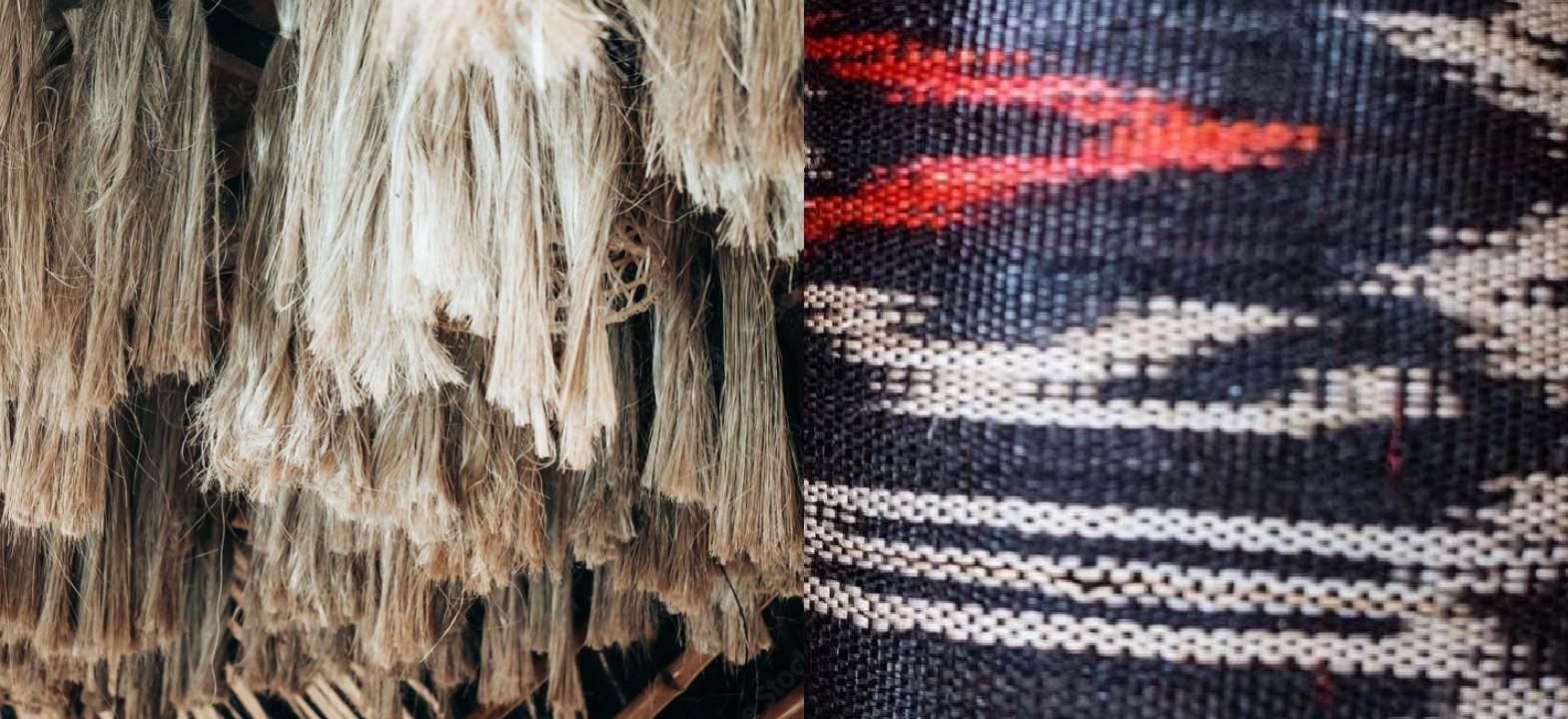Abaca fibre, also known as Manila hemp, is a highly versatile natural fibre derived from the leaf stems of the Musa textilis plant, a type of banana indigenous to the Philippines. Known as the “Queen of natural fibres”, abaca is a herbaceous plant whose fibre has a high amount of lignin and cellulose, giving it significant resistance to traction, putrefaction, abrasion, UV radiation, and salt water degradation. It is utilised for various creative or craft expressions as well as in the textile business to create ropes, strings, threads, and fabric that will eventually be used to manufacture clothes, curtains, and tapestries (Simbana et al., 2020). This fibre has garnered global attention due to its exceptional properties. Over the years, the Philippines has become the world leader in the production of abaca, supplying around 85 per cent of the global demand. Abaca has found applications in diverse industries, from manufacturing fishing nets and ropes to being used in fashion accessories and automotive components. With an annual revenue of $80 million, abaca’s economic impact on the Philippines is significant, and its contributions to sustainable practices are increasingly recognised globally.
The Philippine Success Story: Abaca’s Journey to Global Dominance
The success of the abaca industry in the Philippines has not been an accident but the result of deliberate strategies and focused government initiatives. The country’s leadership in abaca production is underpinned by a combination of favourable growing conditions, substantial investment in research and development (R&D), and strong government support. One key project to highlight is ‘Revitalizing the Abaca Industry through S&T Interventions for Higher Crop Productivity’, which is designed to improve the productivity of abaca farms by utilising high-yielding and virus-resistant hybrid varieties. These efforts are expected to boost farm productivity and, by extension, the income of abaca farmers.
Moreover, the Philippines has strategically invested in increasing the global demand for abaca by marketing its superior mechanical properties and environmental sustainability. For instance, the fibre is increasingly used in high-end markets, such as speciality paper (tea bags, currency notes), medical fabrics, automotive components, and textiles. Abaca is more resilient than wood pulp, making it an excellent alternative in industries such as paper production and cosmetics. The Philippine government continues to support the abaca industry through financial incentives, subsidies, and R&D programmes, all of which have contributed to its current position as a global leader.
The global market for abaca fibres is expanding rapidly. According to industry reports, the value of the abaca fibre market was estimated at $687.60 million in 2023 and is projected to grow at a compound annual growth rate (CAGR) of 14.6 per cent to reach nearly $2,686.47 million by 2033. This growth is driven by increased consumer demand for eco-friendly, sustainable materials. As the textile and automotive industries shift towards greener alternatives, abaca fibre’s popularity will likely continue to rise.
Opportunities for India: Drawing Parallels with Jute Production
India has long been a dominant force in the jute industry, with the country accounting for about 75 per cent of global jute production. Similar to abaca in the Philippines, jute holds a prominent position in India’s agricultural and industrial landscape, particularly in states like West Bengal, Assam, and Bihar. The fibre, known as ‘golden fibre’, is prized for its biodegradability, making it a popular choice for packaging, textiles, and eco-friendly products. India’s jute industry produces a wide range of products, including bags, yarn, blankets, and even decorative fabrics, which are in demand both in domestic and international markets.
However, there are distinct lessons India can learn from the Philippines in strengthening the jute industry. One of the key areas for improvement is R&D. While the Philippines has invested heavily in developing high-yielding, virus-resistant varieties of abaca, India’s jute industry has room for similar innovation. For example, the development of drought-resistant or high-yield jute varieties could help improve productivity and reduce the vulnerability of jute production to climate change.
Another area for improvement is increasing the global appeal of jute products by promoting their sustainability credentials more aggressively. The growing consumer shift towards eco-friendly products is a trend that India’s jute industry can leverage further. Similar to how the Philippines markets abaca as a superior alternative to synthetic fibres, India could position jute as a high-quality, sustainable, and biodegradable material in industries like fashion, automotive, and construction.
Furthermore, India’s jute industry can benefit from more government-backed initiatives aimed at improving farmers’ incomes. While there are already several government schemes in place, there is an opportunity to take inspiration from the Philippine model by offering subsidies or incentives for jute farmers who adopt modern agricultural practices and high-yield crop varieties. The expansion of jute-based products beyond traditional markets could also drive new growth, creating opportunities in emerging sectors like medical products and speciality papers, just as the Philippines has done with abaca.
Enhancing Productivity and Sustainability
The Philippine government’s commitment to the abaca industry has been instrumental in its success. India could emulate this by creating an even more conducive environment for the jute industry, particularly in terms of sustainable farming practices and technological advancements. India’s jute industry, while large, faces challenges like fluctuating prices and competition from synthetic fibres. By investing in new technologies to streamline the production process, enhance quality, and reduce costs, India can safeguard its position in the global market.
Another potential area of growth lies in the expansion of jute products into high-value markets. Much like the Philippines capitalised on the premium segment with abaca-based luxury goods, India could focus on creating higher-end jute products that appeal to global markets in fashion, packaging, and speciality papers. The growing global demand for natural and sustainable materials presents an opportunity for India to reposition jute as a desirable material for eco-conscious consumers.
Conclusion: A Path Forward for India’s Jute Industry
The Philippines’ abaca industry offers valuable insights for India as it continues to lead the world in jute production. Research shows that in the coming years, natural fibres will be extensively used as they are the non-polluting, harmless, renewable as well as sustainable source of fibre. By focusing on R&D, expanding global market reach, and strengthening support systems for farmers, India can ensure the future growth and competitiveness of its jute industry. The key to success lies in innovation, sustainability, and strategic market positioning—qualities that the Philippines has successfully demonstrated in its abaca industry and that India can emulate to strengthen its position as the global leader in jute production.









Comments